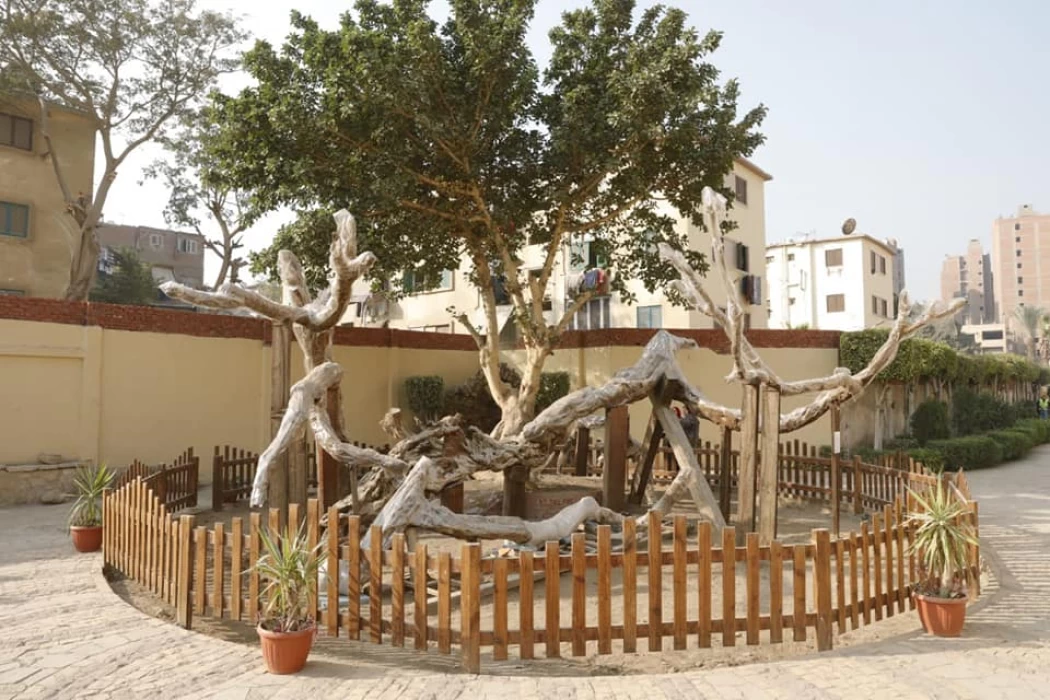
The Tree of Virgin Mary in Matareya
The Tree of Virgin Mary in Matareya
The Coptic Orthodox Church celebrates the Feast of the Entry of the Holy Family into Egypt, which is one of the minor liturgical feasts (and its prayers begin, as usual, on the eve of the liturgical day in the Church), when St. Joseph the Carpenter complied with the angel's command “Arise, take the child and his mother and flee to the land of Egypt.” The feast of the entry of the Holy Family into the land of Egypt is one of the minor liturgical feasts.
The history of the tree of the Virgin Mary in Matariya, one of the important points through which the Holy Family passed in Egypt, which was registered as an Egyptian antiquity in 1966, the archaeological site includes the tree, the well and the cave.
The Maryam Tree Mazar is one of the most famous points of the Holy Family's journey in Egypt. The tree where the Holy Family took shelter in the Matareya neighborhood is one of the most important tourist attractions that has undergone development and renovation work in line with the historical value and status of the shrine.
The route of the Holy Family's journey includes 25 points spanning a distance of 3,500 round trips from Sinai to Assiut, where each site contains a set of monuments in the form of churches, monasteries, water wells and a set of Coptic icons indicating the passage of the Holy Family to those sites, as approved by the Coptic Orthodox Church in Egypt, according to the Coptic Orthodox Church in Egypt.
The Holy Family's entry into Egypt began in Rafah in the northeast of the country, passing through Al-Farma east of Port Said, the Delta region at Sakha in Kafr El-Sheikh, Tel Basta in Sharqia, Samanoud in Gharbia, and then moved to Wadi al-Natrun in the Western Desert, where the monasteries of St. Bishoy, Our Lady of the Assyrian, Al-Baramous, and St. Abu Makkar are located.
I then headed to the area of Mostorod and Matariya, where the Maryam Tree is located. The Holy Family took shelter under a tree at one of the points of their journey in Egypt, which became known today as the Tree of the Virgin Mary and became one of the most important points of the family's itinerary in Egypt.
The Virgin Mary tree is located in Matariya, located in the northernmost part of Cairo, near the obelisk of Senusret, and the Mary tree is one of the well-known Coptic monuments in Cairo and is known as the Virgin Mary tree, and it can be reached from a street branching from Matarawi Street, which is the street of the Mary tree residences, where the tree is surrounded by a large wall with a beautiful garden in the middle of it.
Over the past decades, the Maryam Tree has become a cultural and religious shrine for many pilgrims and visitors from around the world. The tree also attracted the attention of medieval historians such as al-Maqrizi and Imam al-Suyuti, who visited it.
The current tree in the shrine is not the original tree. The original tree became weak and weakened until it fell in 1656 AD, while a group of Franciscan fathers collected its branches and twigs and transplanted them, and the tree grew and branched again.














